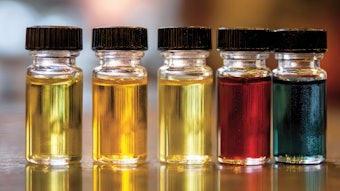Coumarin has an organoleptic impression that is difficult to convey in this modem era, The most graphic terms used are “hay-like” and “new-mown hay,” perhaps a relic from the horse and buggy era. The same terminology is used for the poisonous gas phosgene, which does not smell like coumarin. For the “new-mown hay” description, a clarification is needed, A field of hay or grasses cut in the early morn and allowed to dry in the summer sun will exude a beautiful, sweet aromatic coumarin odor in the late afternoon and evening hours. That odor is gone by next morning. Few of us, however, are fortunate enough to experience this given today’s more urban lifestyle. The description of new-mown hay is valid, but elusive in today’s world. Coumarin may be described as a sweet, aromatic, creamy vanilla bean odor with nut-like tones that are heavy, but not sharp or brilliant. Coumarin has a burning, bitter taste when concentrated, but this effect fades to a sweet herbaceous impression when coumarin is dilute. It blends well and does not stand out.
In the past, when there were numerous suppliers of coumarin and production resulted from various processes with varying degrees of sophistication, there were real problems with organoleptic profiles; by-products from the processes would color the impression. Today, the Rhone-Poulenc material has become the industrial standard against which the Chinese production is compared. Material from the former USSR is seldom seen in the West (although some of this product goes to France even today), so its organoleptic profile is still largely unknown.
Gone are the days when coumarin was so expensive that adulteration with acetanilide or terpin hydrate had to be expected and monitored. Today, the perfumer is blessed with a quality, reproducible material.










